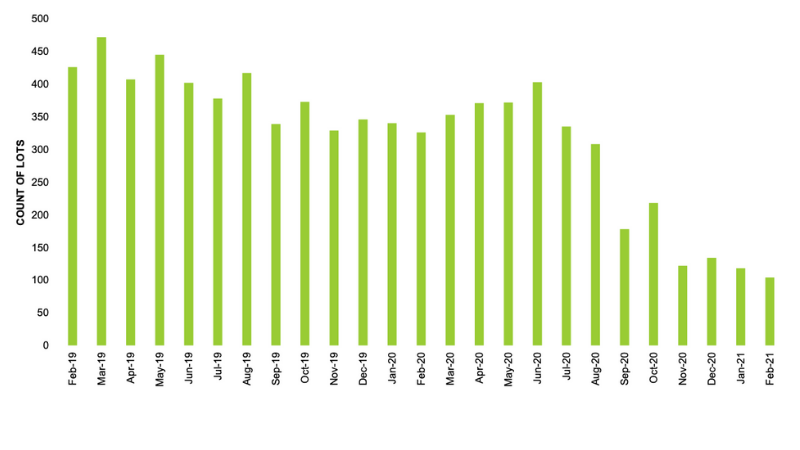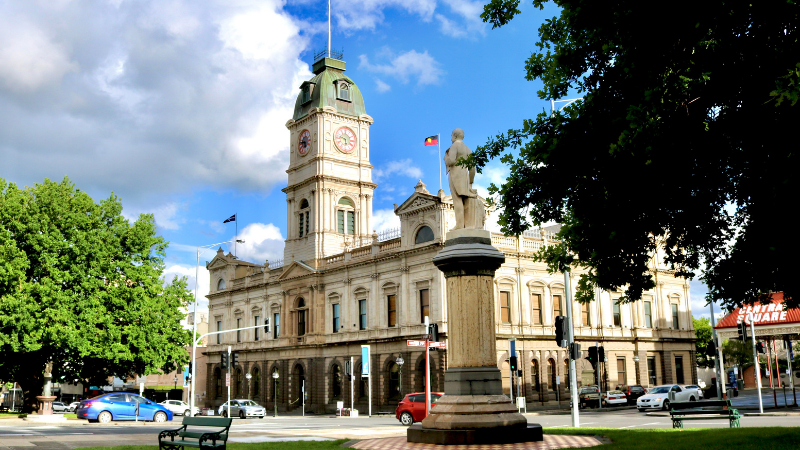The growing appetite for space outside the cities is feeding the land rush in regional centres like Ballarat where the council is grappling with the prospect of a further 50,000 people moving to the region over the next 20 years.
The City of Ballarat Council has forecast it needs a further 20,000 new dwellings to accommodate the population growth and has released the Ballarat Housing Strategy to assess greenfield development opportunities, infill in existing residential areas and higher density in the CBD, while maintaining the historic town's heritage.
As land reserves dry up the council has announced it will expand its growth corridors to free up more greenfield sites, which RPM Real Estate Group Sales director Rod Anderson said was needed to maintain affordability.
Anderson said for places like Ballarat stocks were not replenished quickly enough to meet demand.
“We’ve closed off 12 estates in the past 12 months and we haven’t been able to replenish that in a timely manner,” Anderson said.
“We would sell about 22 lots per month on average in 2016. In 2021 we are selling 136 per month. We’ve got 30 buyers turning up to buy 20 lots, so people are missing out.”
According to the City of Ballarat Council the city will need more than 20,000 dwellings over the next 20 years, putting pressure on the council to find growth corridors.
While population growth in Ballarat has been typically driven by travel and migration, the council is anticipating the impacts of the Covid-19 pandemic will have a long-lasting and uncertain impact on population and economic growth of Ballarat.
The council wants a planning pathway to ensure a 15-year supply of residential land is maintained given the value of construction to the local economy.
Stock overhang in Ballarat

^Source: RPM Real Estate
Exodus to regional areas hurts affordability
But the next few years could be difficult with diminishing land supplies and an overheated regional market, which is markedly less affordable according to Housing Industry Australia economist Angela Lillicrap.
“Regional areas experienced a larger decline in affordability than the capital cities (in the December quarter). The regional index fell by 3.7 per cent in the quarter to return to the level it was in December 2019,” Lillicrap said.
“With the onset of Covid-19, consumer preferences have shifted towards detached housing and regional areas.
“Preliminary migration data shows more Australians left the capital cities in each of the first three quarters of 2020 than at any other time since records began in 2001. This involved an acceleration of retirement plans and fewer people moving to urban centres for work or education.”

Maintaining affordability is key to sustainable growth
Anderson said the Ballarat rail line upgrade was a key investment in the region that allowed commuters to travel from the regional satellite city into Melbourne in just over an hour. He said the HomeBuilder package had helped to boost sales, along with the regional first home buyers grant of $20,000.
“Affordability has certainly been the key as well as opportunity. I think it’s quite sustainable (growth) with the infrastructure and affordability on offer.”
RPM Real Estate research manager Michael Staedler said figures showed a sustained growth in people moving regionally for more space and a cheaper buy in. He said Ballarat and Bendigo were modelling their growth corridors on Melbourne and Geelong, ensuring there were job opportunities flowing to the regions to entice first home buyers and upgraders to move.
Corelogic’s executive director of research Tim Lawless said regional housing values rose at more than four times the pace than capital city markets over the 12 months to January.
“Corelogic’s combined regionals index was up 7.9 per cent over the 12-month period compared with a 1.7 per cent lift in combined capital city home values,” Lawless said.
“As more Australian’s look for properties outside of the capital cities, an imbalance between demand and supply is placing upwards pressure on housing prices. This is most apparent in markets like Richmond-Tweed, which includes high profile towns such as Byron Bay and Tweed Heads.
“Demand for regional housing can be attributed to a range of factors. Generally, prices are cheaper than their capital city counterparts, housing densities are typically lower which is likely to be appealing amid a global pandemic, and many workers have a newfound appreciation and ability to work remotely which is supporting additional demand.”
The Ballarat Housing Strategy is currently out for community consultation.














